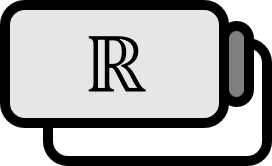Three Axioms of Analysis: The Axiom of Completeness
Axioms1
A set $E \subset \mathbb{R}$ is not empty and if $E$ is bounded above, then a supremum $\sup(E) < \infty$ exists.
Explanation
The axioms of fields and orders might seem like complicating the known, but the completeness axiom does not seem so at a glance. Definitions for the terminology used here appear to be necessary first.
Definitions
For every element $a$ of $E$ if $a \le M$ is satisfied, then $E$ is called bounded above. All such $M$ satisfying these conditions are called the upper bounds of $E$. $\sup(E)$ is the smallest upper bound of $E$, for all upper bounds $M$ of $E$, satisfying $\sup (E) \le M$. This is called the supremum or least upper bound of $E$.
Conversely, for the case with the opposite inequality,
For every element $a$ of $E$ if $a \ge m$ is satisfied, then $E$ is called bounded below. All such $m$ satisfying these conditions are called the lower bounds of $E$. $\inf(E)$ is the largest lower bound of $E$, for all lower bounds $m$ of $E$, satisfying $\inf (E) \ge m$. This is called the infimum or greatest lower bound of $E$.
Definitions might suddenly overflow and confuse, but essentially, it doesn’t challenge our concept. It merely defines when a set has limits and what those limits are called.
Switching back to the completeness axiom, it feels like repeating the introduced definitions. The difference is simple. Definitions only talk about when to call something if it exists, not whether it really exists. The completeness axiom discusses this ’existence'.
However, it might prompt the question: should this really be an axiom? Is it such a fundamental fact that it needs to be axiomatized, cannot it be proven? At first glance, it seems these upper bounds definitely exist by definition, but that’s not the case.
Counterexample
If $E$ is bounded above, then there would be upper bounds $M$ satisfying the condition, and among these upper bounds $M$, there exists the smallest value as the supremum $\sup(E)$. But, think reversely, $\sup(E)$ is the largest value among $-M$, i.e., the supremum. The claim that the smallest value exists itself bases on the existence of a supremum. Thus, inevitably leading to a circular argument.
■
Whether it’s an upper or lower bound, magnitude large or small, the direction of the argument roundabouts. Ultimately, we cannot ascertain the existence of these bounds. Hence, there was no choice but to introduce a new axiom, the completeness axiom.
Theorem
If a subset $E$ of the set of integers $\mathbb{Z}$ has a supremum, then $\sup(E) \in E$
Without the completeness axiom, we wouldn’t even trust such an obvious fact because its assumption is doubtful.
Complete?
The term complete, a mild version of completeness完備, when generalized in a metric space beyond the real number space $\mathbb{R}$ includes spaces that contain converging points of Cauchy sequences as complete spaces. However, in everyday context, the English word Complete is not typically used in the sense of being fully equipped (完備), instead, it is often used with ‘completion’ or ‘conclusion,’ denoting the end of something ongoing. This, as mentioned, since it guarantees the existence of a convergence point (within that space), the term complete is suitable.
Of course, capturing a Cauchy sequence is different from capturing $E \subset \mathbb{R}$, though explanations such as $\mathbb{R}$ having separability are too early right now. It’s okay to think you’ll learn about such later and move on.
William R. Wade, An Introduction to Analysis (4th Edition, 2010), p16-18 ↩︎
